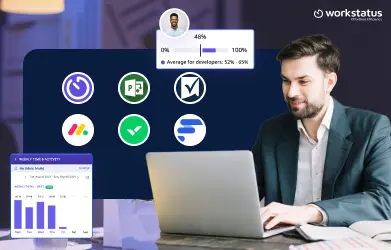Table of Contents
In today’s fast-paced and ever-evolving business landscape, having a competent workforce can differentiate between success and failure.
However, simply hiring the right people and managing them is not enough.
It’s essential to analyze and track their performance to ensure optimal productivity and identify areas for improvement.
That’s where workforce analytics comes in.
Do you know?
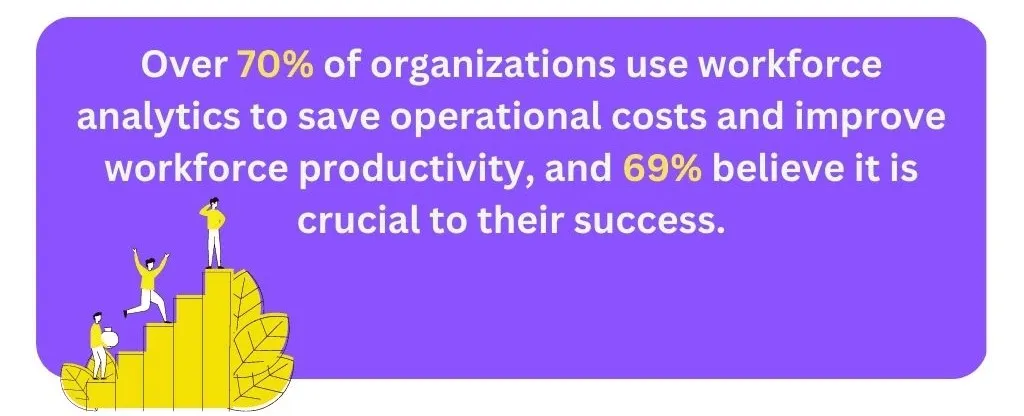
To better understand the wide range of uses for workforce analytics, the following graph provides a clear visual representation of the use cases for which workforce analytics can be applied. 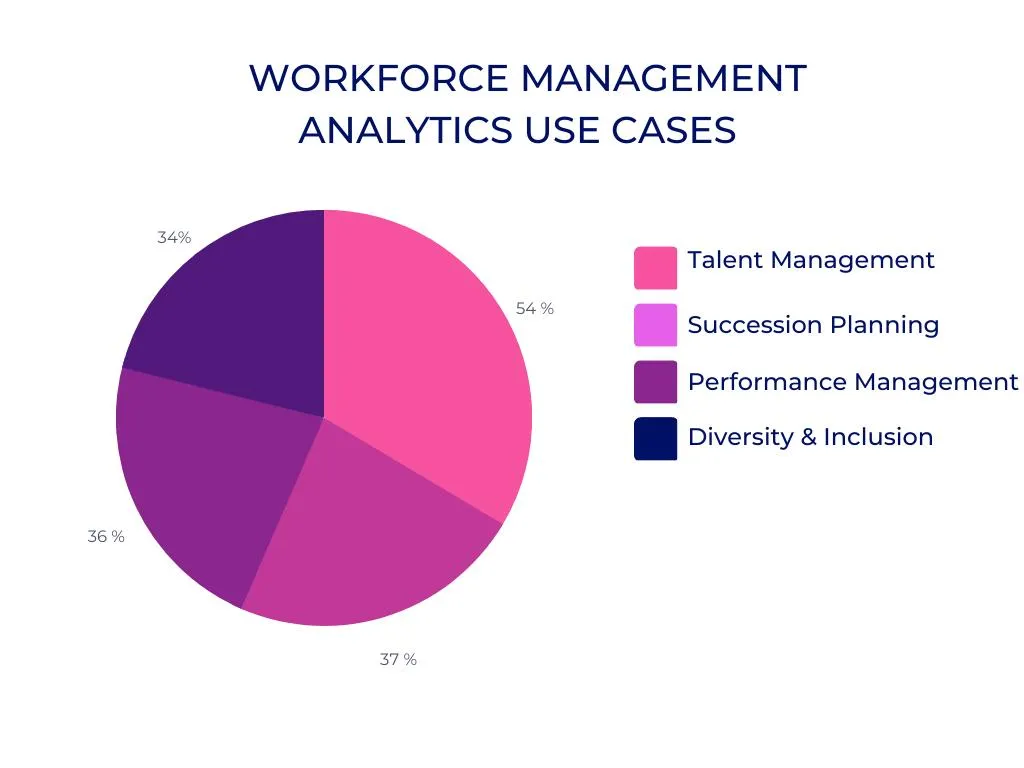
With such statistics and facts, It’s clear that workforce analytics is a lifeline for businesses and plays an important role in helping companies maximize their performance and ROI.
In this blog, we’ll explore:
- How can workforce analytics be the lifeline for your business?
- What metrics can you track from workforce analytics?
- What can it do to help companies solve some of their biggest challenges?
- What tool can you use for workforce analytics?
So join us in this journey to discover the importance of workforce analytics and how it can help you cultivate a successful business.
Let’s get started
Revolutionizing the Way You Work: An Introduction to Workforce Analytics
Workforce Analytics is the process of collecting, analyzing, and interpreting data about employees to gain insights into the workforce:
- Performance
- Productivity
- Overall business operations
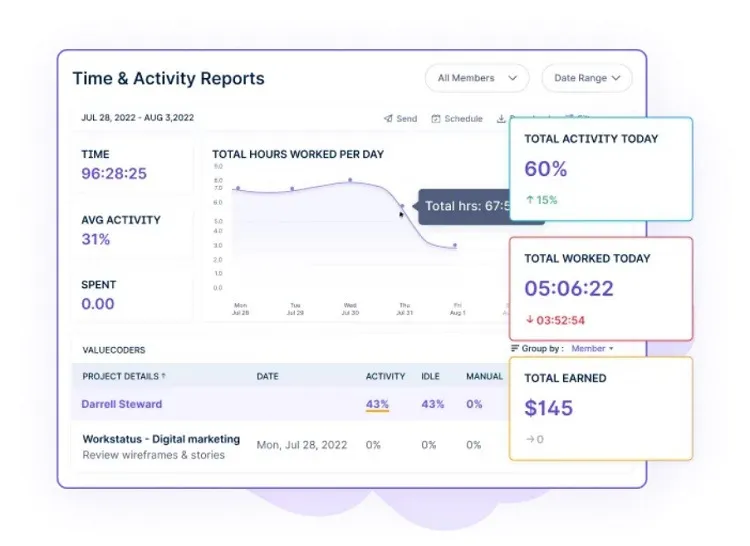
By using data-driven insights, organizations can:
1) Better understanding of the performance of their teams
2) Identify bottlenecks in workflow and take corrective actions
3) Optimize the allocation of resources
4) Uncover workforce trends and patterns for better decision-making
5) Improve employee productivity and performance
Now let’s take a look at

Why Is Workforce Analytics On The Boom In Today’s Organizations?
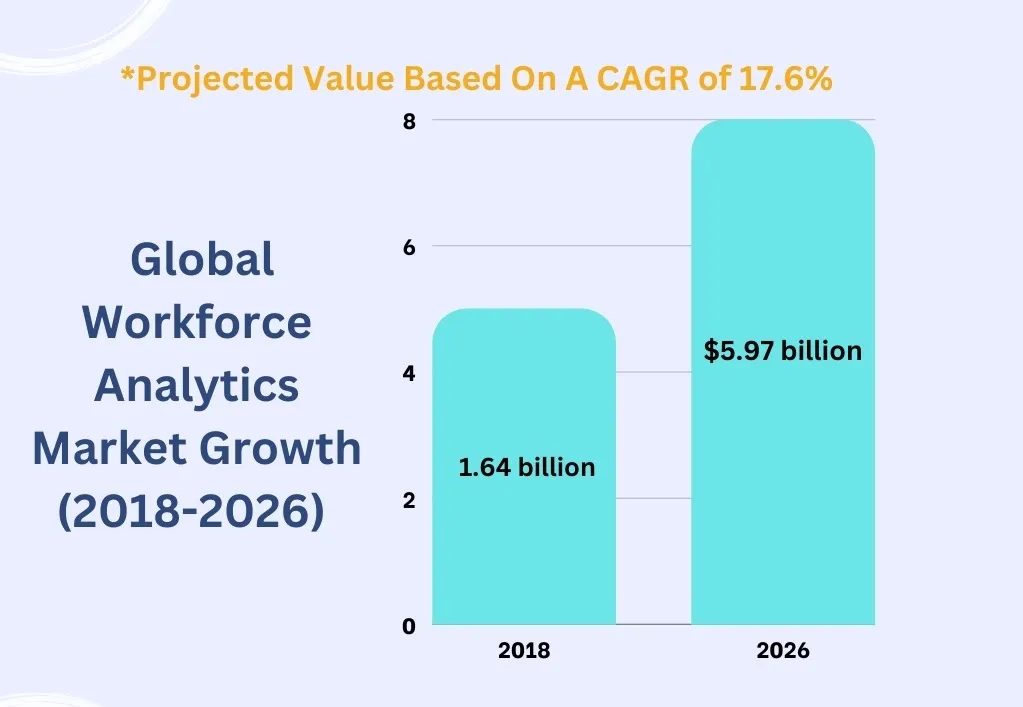
In 2018, the global workforce analytics market was valued at $1.64 billion.
By 2026, the market is expected to grow at a CAGR of 17.6% to $5.97 billion.
This is because organizations realize the importance of leveraging data to measure and improve their workforce.
Here are some of the main reasons why workforce analytics is becoming more popular
1) Data-Driven Decision Making:
Workforce analytics enables organizations to make informed decisions based on data rather than assumptions or gut feelings.
By analyzing data related to employees:
- Performance
- Productivity
- Engagement

Businesses can identify areas for improvement and make better decisions to optimize their workflow for maximum efficiency.
2) Improved Employee Engagement:
With the help of workforce analytics, companies can pinpoint areas where employees are unhappy and unengaged.
This helps organizations identify issues and take corrective actions that improve employee productivity, morale, and performance.
3) Reduced Costs:
The use of workforce analytics leads to:
- Streamlined operations
- Improved processes
- Informed decision-making
This eventually helps companies reduce their expenses and lead to higher profitability.
4) Attraction & Retention:
By leveraging workforce analytics, companies can identify what matters to their employees and provide better benefits and perks that lead to higher attraction and retention.
This ultimately helps the organization to maintain a healthy and engaged staff leading to success.
These are just some reasons why workforce analytics is vital to the success of modern businesses.
Now let’s check out the:
Challenges That Companies Face Without The Workforce Analytics
Challenge 1) Lack Of Understanding Of Employee Performance:
Companies may struggle to understand how productive their employees are without workforce analytics.
This can lead to a lack of visibility into which employees are meeting goals and which may need additional support or training.
Solution1) Workforce analytics can help companies by providing detailed reports on employee activity levels, including metrics like
- Website visited
- App used
- Real-time screenshots of activities
- Productivity levels
![]()
These insights allow managers to have complete visibility into their team’s performance and identify areas for improvement.
Challenge 2) Inefficient Scheduling & Task Management:
Managers may struggle to create schedules and manage tasks effectively without workforce analytics. This can lead to
- Scheduling conflicts
- Missed deadlines
- Employee burnout
Solution 2) Workforce analytics can help managers ensure employees are properly scheduled, and tasks are assigned promptly.
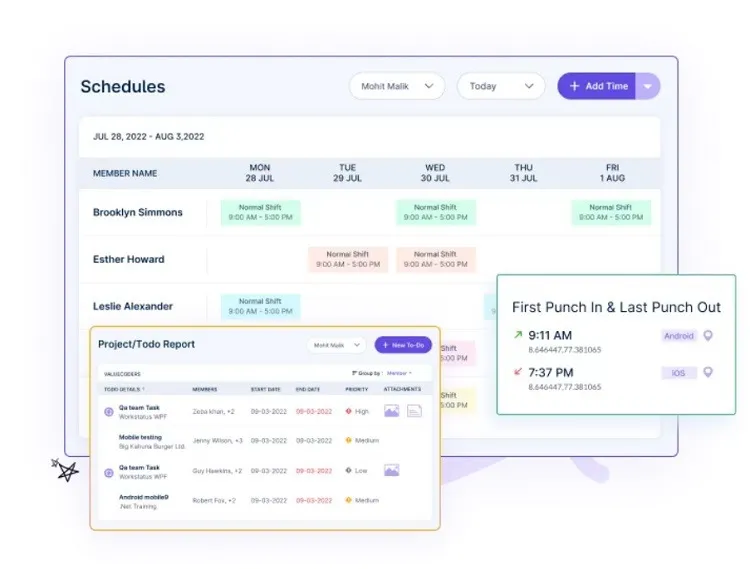
Automated scheduling tools make it easy to assign tasks and adjust schedules per the workforce’s:
- Availability
- Skillset
- Workload
This helps keep operations running smoothly, reducing the risk of missed deadlines or overworked staff.
Challenge 3) Inability To Optimize Workforce Productivity:
Without workforce analytics, companies may struggle to optimize their workforce performance and maximize their employee’s productivity by getting the best returns on investments. This can lead to
- Inefficiencies
- Wasted resources
- Missed opportunities
Solution 3) Workforce analytics can provide insights into employee performance, such as:
- Total productivity
- Performance metric
- Total project work on

With this information, managers can make data-driven decisions to optimize their workflow to enhance employee productivity and develop better strategies for the future.
Challenge 4) Inaccurate Attendance Management:
Without effective attendance management, companies may struggle to track employee attendance, leading to:
- Payroll errors
- Scheduling conflicts
- Lack of accountability
Solution 4) Workforce analytics can help companies manage employee attendance more effectively by providing real-time data on attendance patterns, tardiness, and absenteeism.
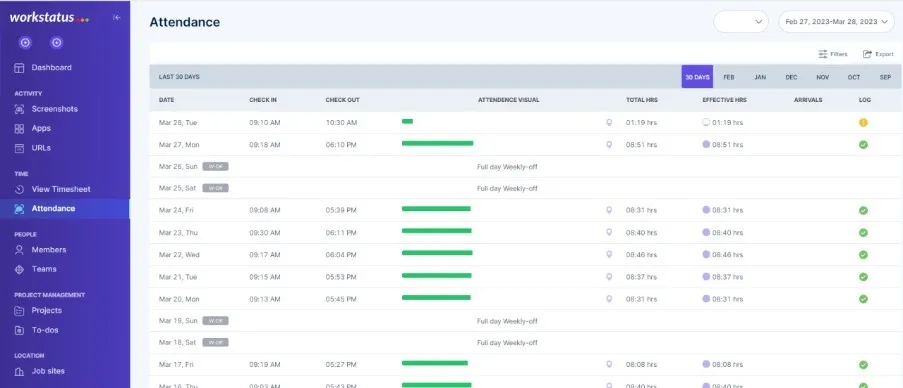
Automated attendance tracking systems with selfie validation companies can also reduce the manual effort of tracking employee attendance and ensure accurate attendance and payroll calculations.
Challenge 5) Inefficient Invoicing Management:
Without an efficient online invoicing management system, companies may struggle to accurately track and manage their invoicing process, leading to:
- Delayed payments
- Errors in billing
- A negative impact on cash flow
Solution 5) An online invoicing management system can streamline the invoicing process by automating tasks such as:
- Creating and sending invoices
- Tracking payments and billable hours
- Managing payment records
- Generating invoicing reports
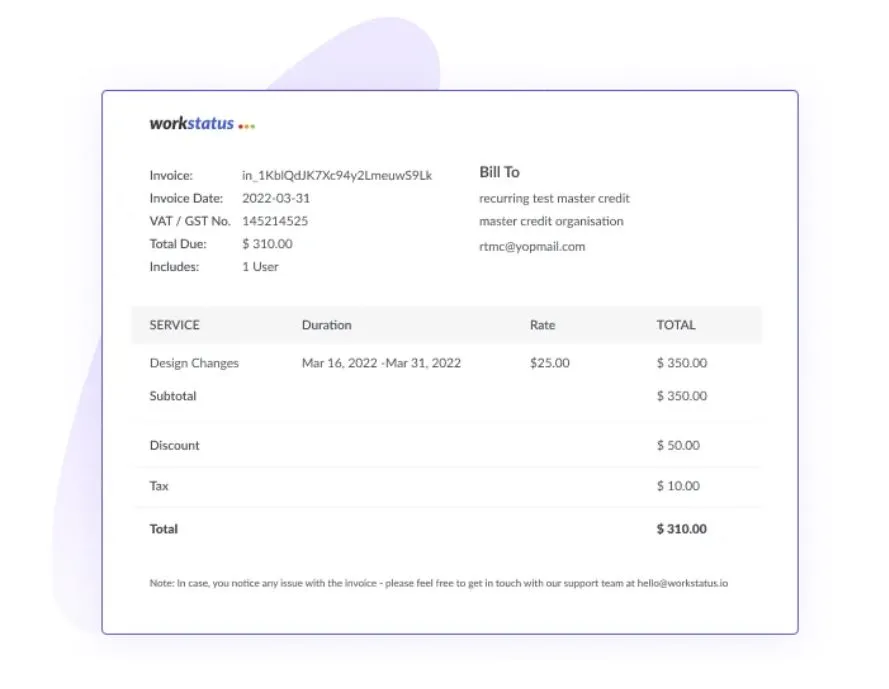
This helps companies save time and reduce errors in billing while also improving cash flow by ensuring timely payments.
As we are now familiar with the solution to the problem
Now it’s time for the most important step.
Which Workforce Analytics Software To Choose?
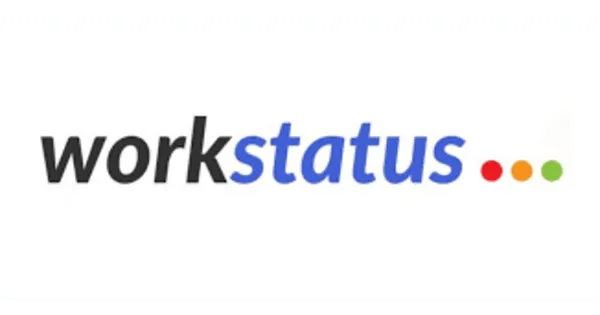
This is an important step since the software you pick can make or break your ability to get meaningful insights from your workforce data.
The most popular and effective workforce analytics software is Workstatus.
It is an all-in-one time tracking, project management, and productivity monitoring tool that helps businesses manage their remote teams and gain valuable insights into employee performance and productivity.
Workstatus provides a range of features that enable businesses to:
- Track employee time
- Monitor activity levels
- Track project progress
- Generate reports on employee performance
Those features include:
3) Workforce Management
4) Employee Activity Monitoring
5) Active Screenshot Capture
6) GPS Tracking
7) Geofencing
8) Selfie Validation
9) AI Powered Reports
10) Central Dashboard
Workstatus is an excellent choice for businesses looking for reliable and user-friendly workforce analytics software that can help them gain insights into team performance and ensure optimum productivity.
Next step :
Now that you understand the value of workforce analytics for your business, it’s time to take action.
Start by identifying the key performance indicators (KPIs) that you want to track and are most relevant to your organization’s goals and objectives.
Then, invest in suitable technology and tools to:
- Collect
- Analyze
- Visualize
the data in an actionable way to make informed decisions.
You can sign up for a free trial of Workstatus to test out their workforce analytics software, which will eliminate your hassle of:
- Manually collecting data
- Monitoring and tracking progress over time
- Visualizing the findings
Once you have a solid foundation, it’s time to use the insights tracked from workforce analytics to make strategic decisions that can drive organizational success.
So, start leveraging the power of workforce analytics today to gain a competitive edge in your industry.
That’s all for today.
Thanks for reading!
FAQs
What metrics should I track to get the most out of workforce analytics?
There is no one size fits all answer to this question, as the specific metrics you track will depend on your organization’s specific needs and objectives.
However, some common metrics often tracked in workforce analytics include:
- Employee engagement
- Performance & productivity metrics
- Workforce attendance
- Project completion metrics
By tracking these metrics, you can gain valuable insights into the workforce and identify opportunities for improvement.
How can I use workforce analytics to improve my organization’s performance?
Workforce analytics can help organizations make strategic decisions by providing insight into employee performance and productivity.
By tracking metrics such as:
- Project completion rates
- Employee engagement scores
- of milestones accomplished
You can gain a better understanding of which areas need improvement.
This data can then be used to inform decision-making in terms of training initiatives or changes to organizational structure that could improve the overall performance of your organization.



